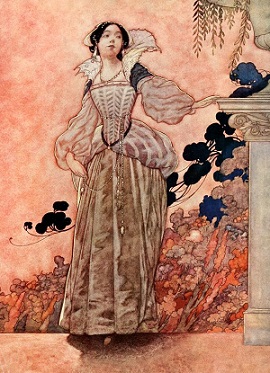

The second sestet then deviates from this course and prompts the reader to rethink love and consider how it may not be physical food but it can be a kind of spiritual food that can cause people to starve if they do not have it. The first sestet (six lines) give the impression that love is not all that important. All men make faults, and even I in this, Authorizing thy trespass with compare, Myself corrupting, salving thy amiss, Excusing thy sins more than thy.

The sonnet holds true to the sonnet structure as iterated by Shakespeare with 14 lines of rhymed iambic pentameter setting the course for the subject to announce itself, turn, and surprise in the end. SONNET 35 No more be grievd at that which thou hast done: Roses have thorns, and silver fountains mud, Clouds and eclipses stain both moon and sun, And loathsome canker lives in sweetest bud. The syntax is modern classical/conventional. Here is Sonnet 130 by William Shakespeare. The use of capitalization is standard and conforming to traditional writing norms. the scansion is made easy because the lines have five feet with a pattern of unstressed, stressed syllables. This does not however disrupt the flow of the meter. And yet, by heaven, I think my love as rare As any she belied with false compare. I grant I never saw a goddess go My mistress, when she walks, treads on the ground. And like a Shakespearean sonnet, it begins similarly - by defining love in negative terms first, just as Shakespeare does in Sonnet 116 when he states, "Love is not love / Which alters when it alteration finds." Here, Millay gives voice to what Love is not, launching off from where Shakespeare leaves us, but holding true to the form which he sets down, from the first line, "Love is not all: it is not meat nor drink" to the last, "It well may be. I love to hear her speak, yet well I know 10 That music hath a far more pleasing sound. The lines are written in iambic pentameter - that is, they are marked by stressed/unstressed syllables of five feet per line, just like a traditional Shakespearean sonnet. And yet the poet concludes that in spite of all these practical reasons, love is still, in fact, everything - that is, it is worth more than all other practical concerns. In this case, the first part of the sonnet is set to giving negative reasons for what love is not and why it is not so important in practical terms. It also contains a "turn," in that the argument that the poet appears to be making throughout the first half of the poem is suddenly turned in a different and unexpected manner so that the last lines of the poem surprise the reader and lead him to a contradictory or opposite conclusion. Sonnet 15: When I Consider Everything That Grows.


Sonnet 14: Not From The Stars Do I My Judgement Pluck. Sonnet 13: O That You Were Your Self, But, Love, You Are. Sonnet 12: When I Do Count The Clock That Tells Time. The poet urges the young man to take care of himself, since his breast carries the poet’s heart and the poet promises the same care of the young man’s heart, which, the poet reminds him, has been given to the poet not to give back again. Vincent Millay utilizes a traditional sonnet form in "Love is Not All" that is reminiscent of a Shakespearean sonnet, with an ABAB, CDCD, EFEF, GG rhyme scheme. Sonnet 11: As Fast As Thou Shalt Wane, So Fast Thou Grow’st. Sonnet 130 is clearly a parody of the conventional love sonnet, made popular by. Vincent Millay's "Love is Not All"Įdna St. The dark lady, who ultimately betrays the poet, appears in sonnets 127 to 154. Scanned Version Colin David Reese: Hamlet Act 2, Scene 2 Scanned Version Jim Devita: Henry VI, part iii Act 3, Scene 2 Scanned Version Ron Russell and James Wallert: Richard III Act 1, Scene 1 Scanned Version Jeffrey C.Edna St. Nicholas Martin-Smith: As You Like It Act 2, Scene 7Įllen Geer, Willow Geer, Melora Marshall: A Midsummer Night’s Dream Act 1, Scene 1 Tom Rooney: Measure for Measure Act 2, Scene 2 Gabra Zackman: The Taming of the Shrew Act 5, Scene 2 Richard Sheridan Willis and Robert Richmond: The TempestĬhris Clavelli: The Winter’s Tale Act 1, Scene 2 TEXTS Louis Colaianni: Romeo and Juliet Prologue Scanned Version Jolly Abraham: The Winter’s Tale Act 3, Scene 2 Scanned Version Eric Tucker: Hamlet Act 4, Scene 4 Scanned Version Drew Cortese: Richard III Act 4, Scene 4 Scanned Version Grant Goodman: Twelfth Night Act 1, Scene 1 Scanned Version Jason O’Connell: All’s Well That Ends Well Act 4, Scene 3 Scanned Version


 0 kommentar(er)
0 kommentar(er)
